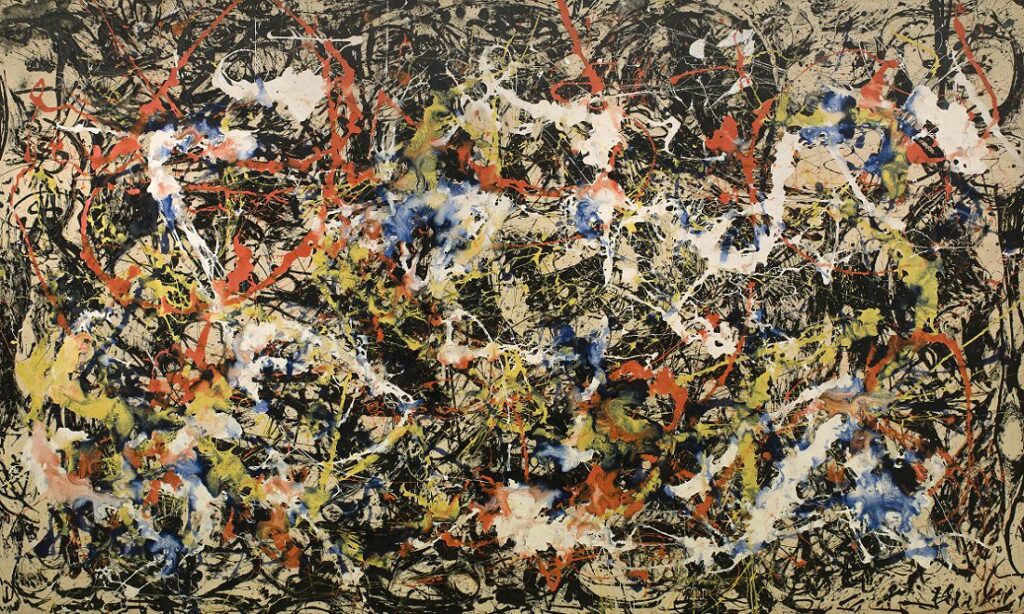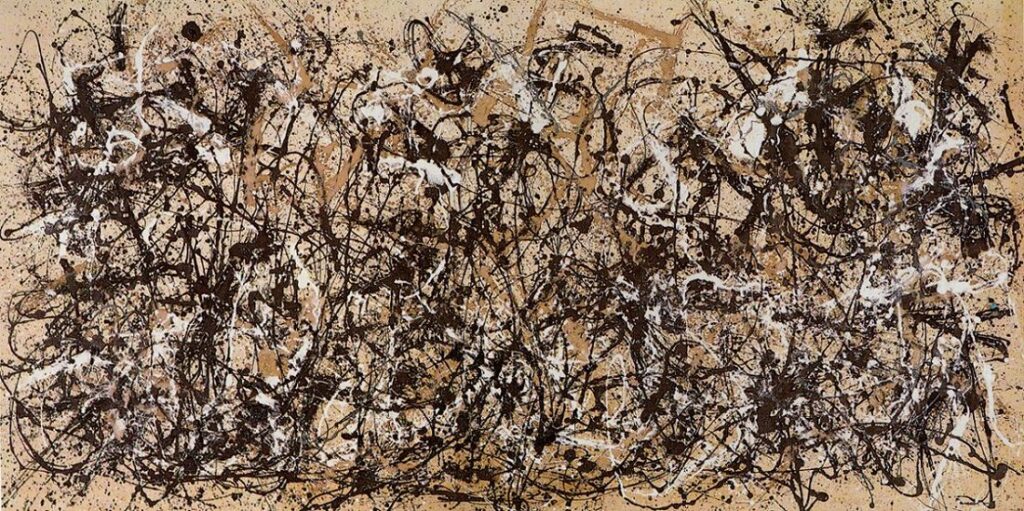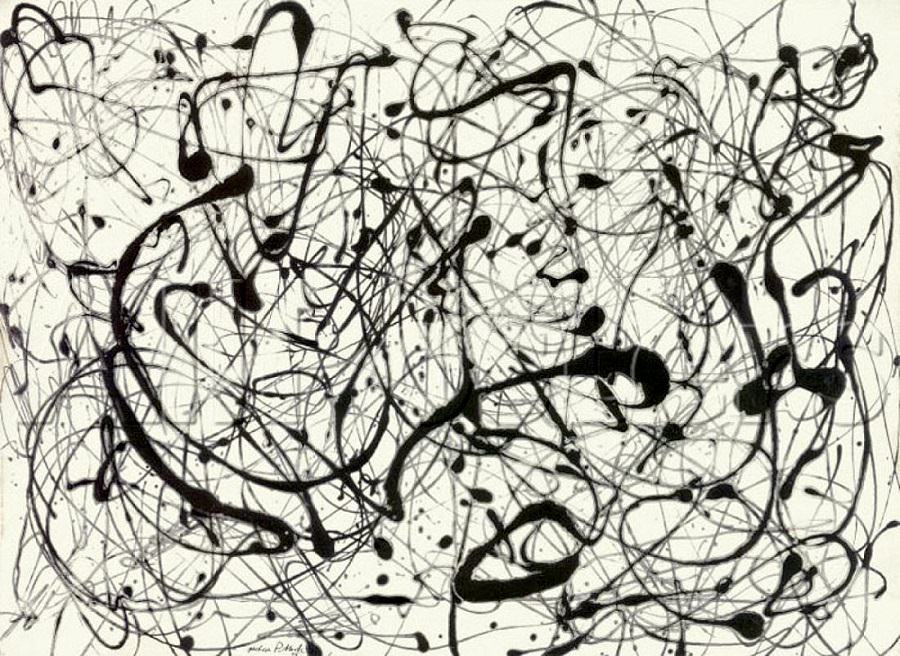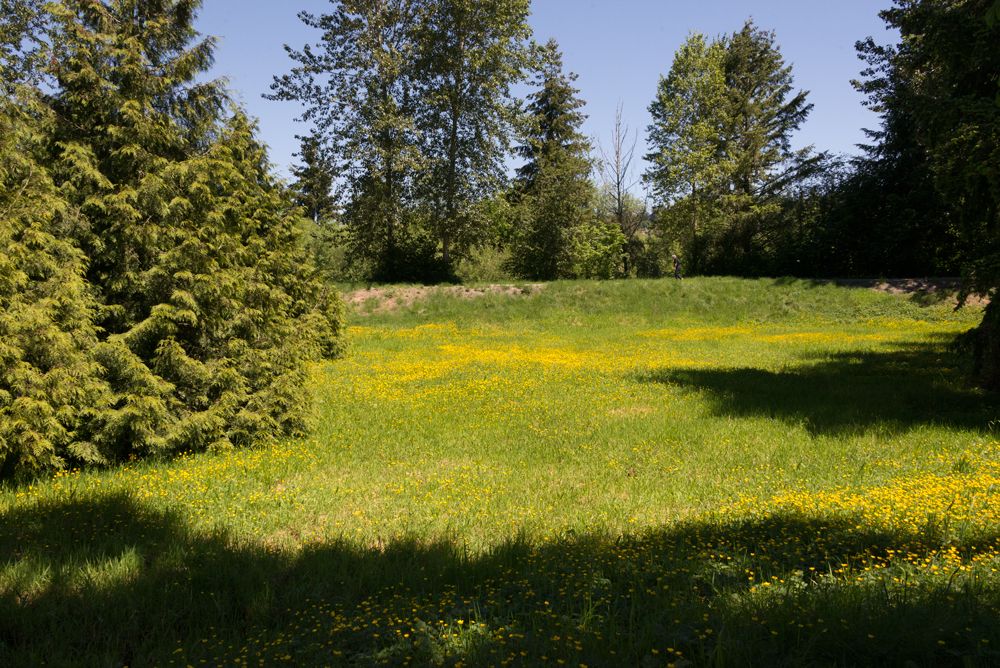Jackson Pollock’s drip paintings are considered masterpieces of modern art. This method drips and flicks paint onto a surface laid out on the floor. Pollock employed this technique to produce rhythmic, energetic paintings. Initially his works received mixed reviews by critics, such as the quote from art critic Emily Genauer the paintings ‘resemble nothing so much as a mop of tangled hair I have an irresistible urge to comb out.’ But as the years went by, these paintings were accepted as works of genius. The patterns created are not simple splashes of paint thrown onto a surface, but a deliberate display of nature in an abstract manner.
Physicist and art historian Richard Taylor investigated his works and realized there is a fractal nature to them. The fractal dimensions of Pollock’s earlier drip paintings, Taylor concluded, correspond closely to those found in nature. See full article here at Discover Magazine.
Note: the images below are all courtesy of jackson-pollock.org


An enduring quality to these paintings is their fractal nature. Not only did Taylor find that they exhibit self similarity of scale, an important component of fractal geometry, but their fractal dimension resembles that of coastlines. In fact, Number 14, has a fractal dimension of 1.45, similar to that of many coastlines.

We humans find this fractal pattern very aesthetic. Taylor and perceptual psychologists in Australia and England asked 50 subjects to evaluate about 40 different patterns. Subjects preferred fractal dimensions between 1.3 and 1.5, roughly 80 percent of the time.
Athroisis in Pollock’s Paintings
I believe Pollock intuited the fractal nature of nature and worked very hard to show it in his work. This includes the concept of athroisis. Fractal patterns, using self similarity of scale, gather in groups of different sizes. Pollock’s paintings show this gathering by color. The result is a dynamic pattern. Can you see in the photo below the similarity between the flowers and the arrangement of colors in Pollock’s paintings?

It follows from the concept of athroisis that there is no center. In a field of flowers or a grove of trees, there is no place one can point to and say, “this is the point from which everything has come.” There are only gatherings of similar items. If we happened to be in a forest, for example, we would never say to meet in the center. We might say instead to meet in the heart of the forest, the place where the trees are densest. This may be towards the center of the forest, but it is not necessary.
Pollock’s paintings have no center. This is an important reason for their dynamic nature. Like clouds in the sky, his colors gravitate towards each other and simultaneously pull apart. The result are patterns that are diffuse and permeable, in other words, fractal.
Seventy years ago, Pollock saw an important underpinning in nature. His remarkable observational skills and artistic ability expressed this in his paintings. The world is much richer because of it.